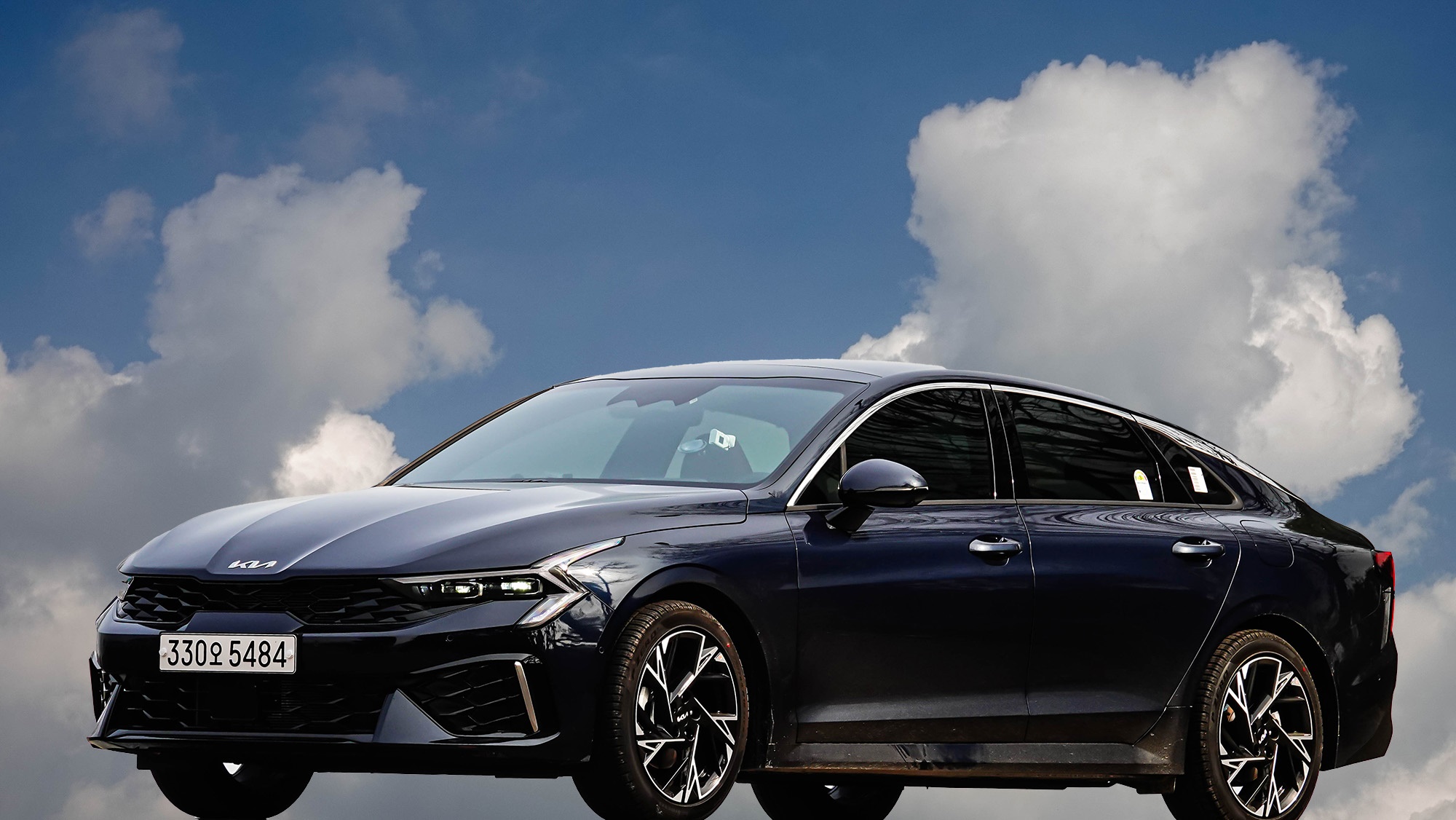
The K5 has been replaced with a new model. This is an enhanced version of the third generation K5 that was released in 2019. It measures 4,905 x 1,860 x 1,445 mm, with a wheelbase of 2,850 mm.
The K5’s lines are alive. The heart beat line that makes up the daytime running lights has become more pronounced. The deeply sculpted line in the body looks incredibly provocative, like raised eyebrows. From the front, it appears as if only lines are visible. The tiger nose design isn’t as distinct as before, but it remains in the center of the grill. The chrome line that wraps around the rear roof and the side silhouette stands out impressively. The K5 is a strongly designed car, representing ‘the design of Kia’ in the midsize segment.
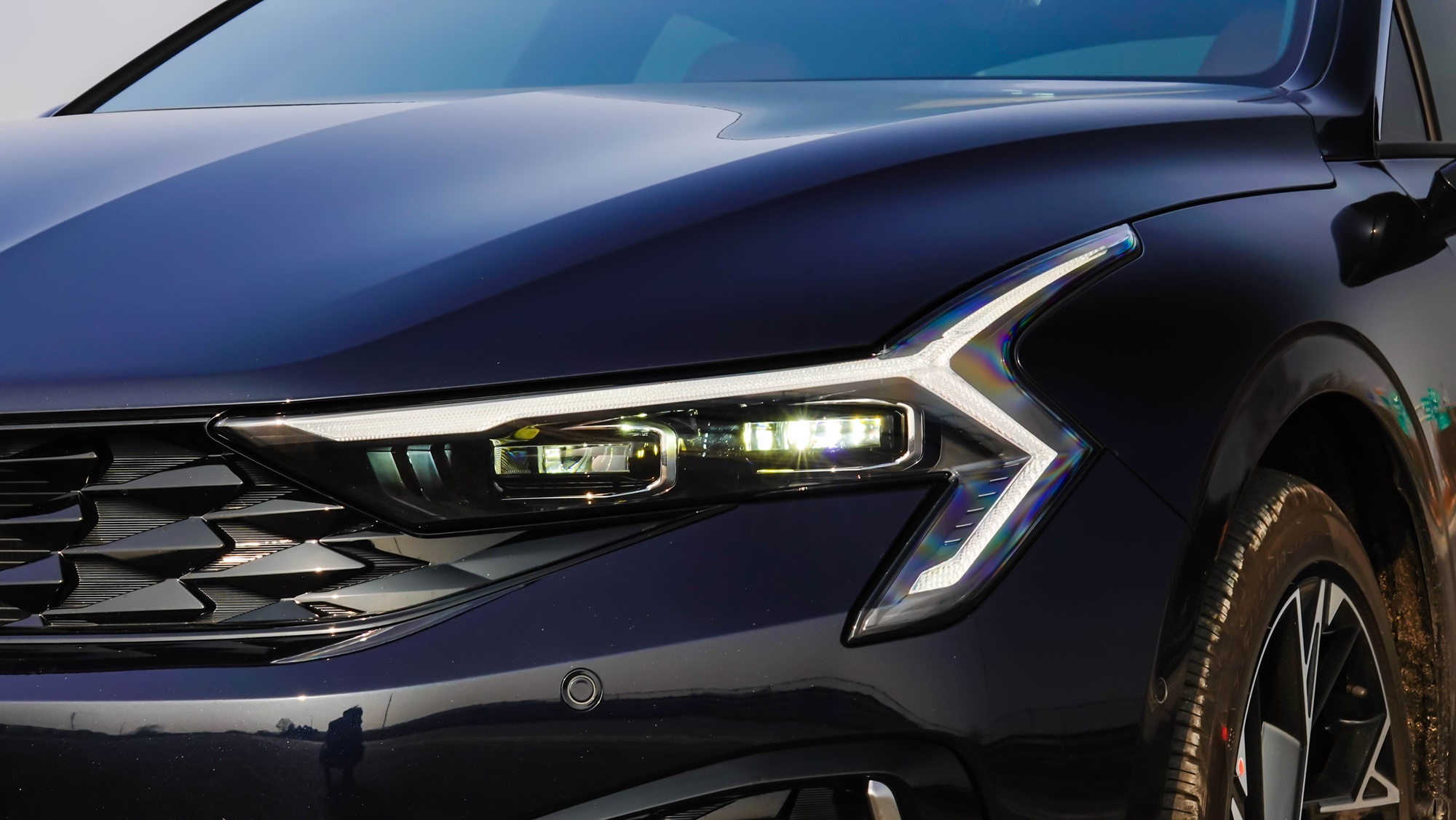
The lineup is made up of four powertrains excluding diesel: 2.0 gasoline, 1.6 gasoline turbo, hybrid, and LPI. The test car is the 2.0 gasoline signature trim.
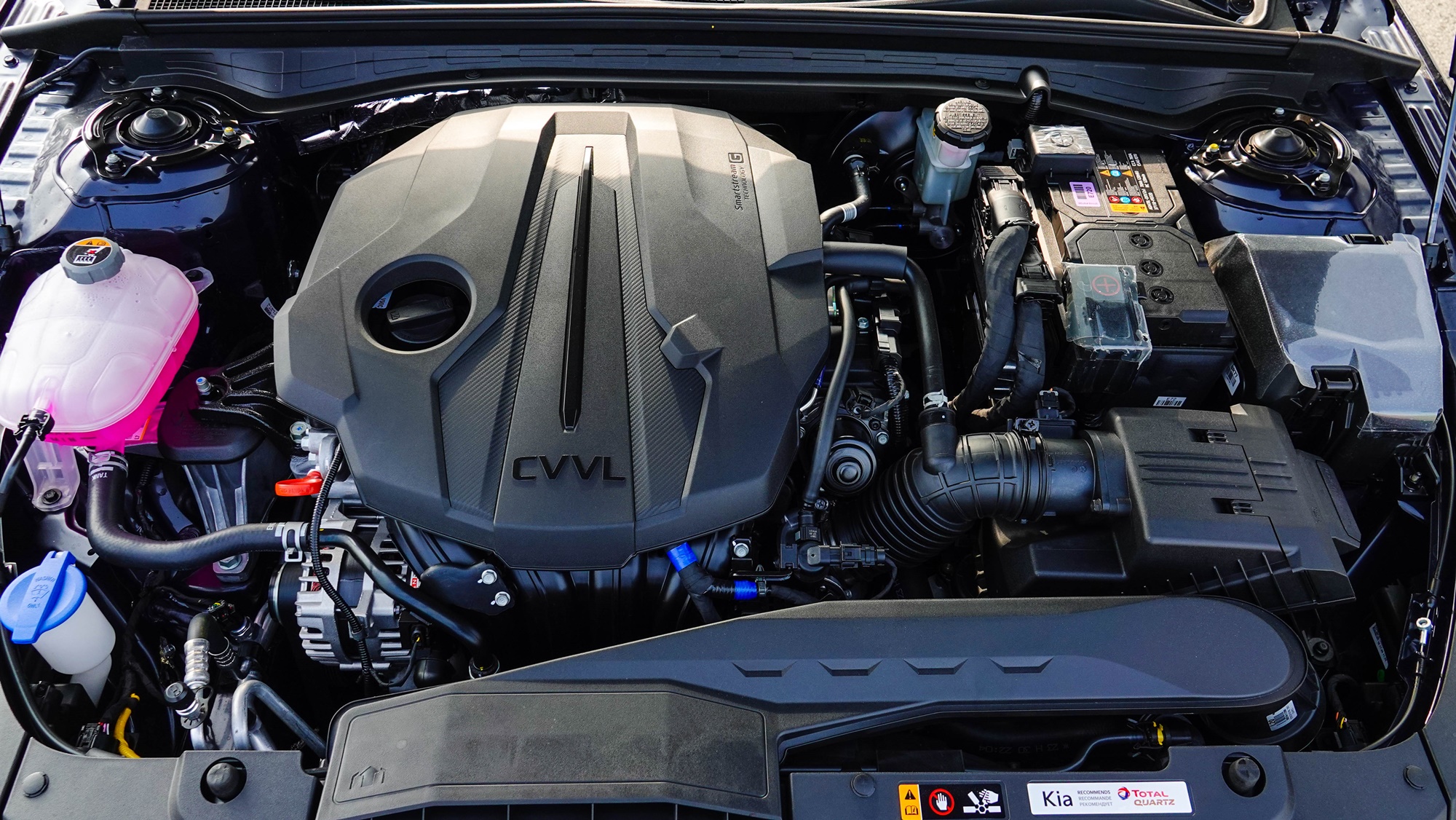
The Smartstream 2.0 gasoline engine produces a maximum output of 160 horsepower through a 6-speed transmission. With a curb weight of 1,455 kg, the power-to-weight ratio is 9.1 kg per horsepower. It has enough power to reach 100 km/h in the 9 to 10-second range. When I measured using a GPS device, I recorded a time of 9.93 seconds to reach 100 km/h. This number reflects the car’s character, which leans more towards moderation than outright performance—this is typical for a midsize sedan.
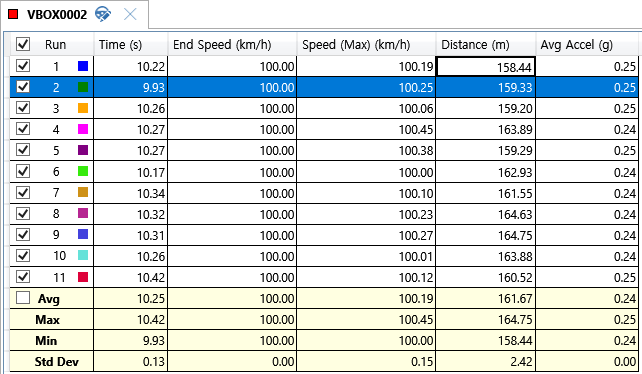
When accelerating, the car gradually collects power to start moving. The strong force becomes noticeable later. The sound precedes, and the body seems to struggle to catch up behind it.
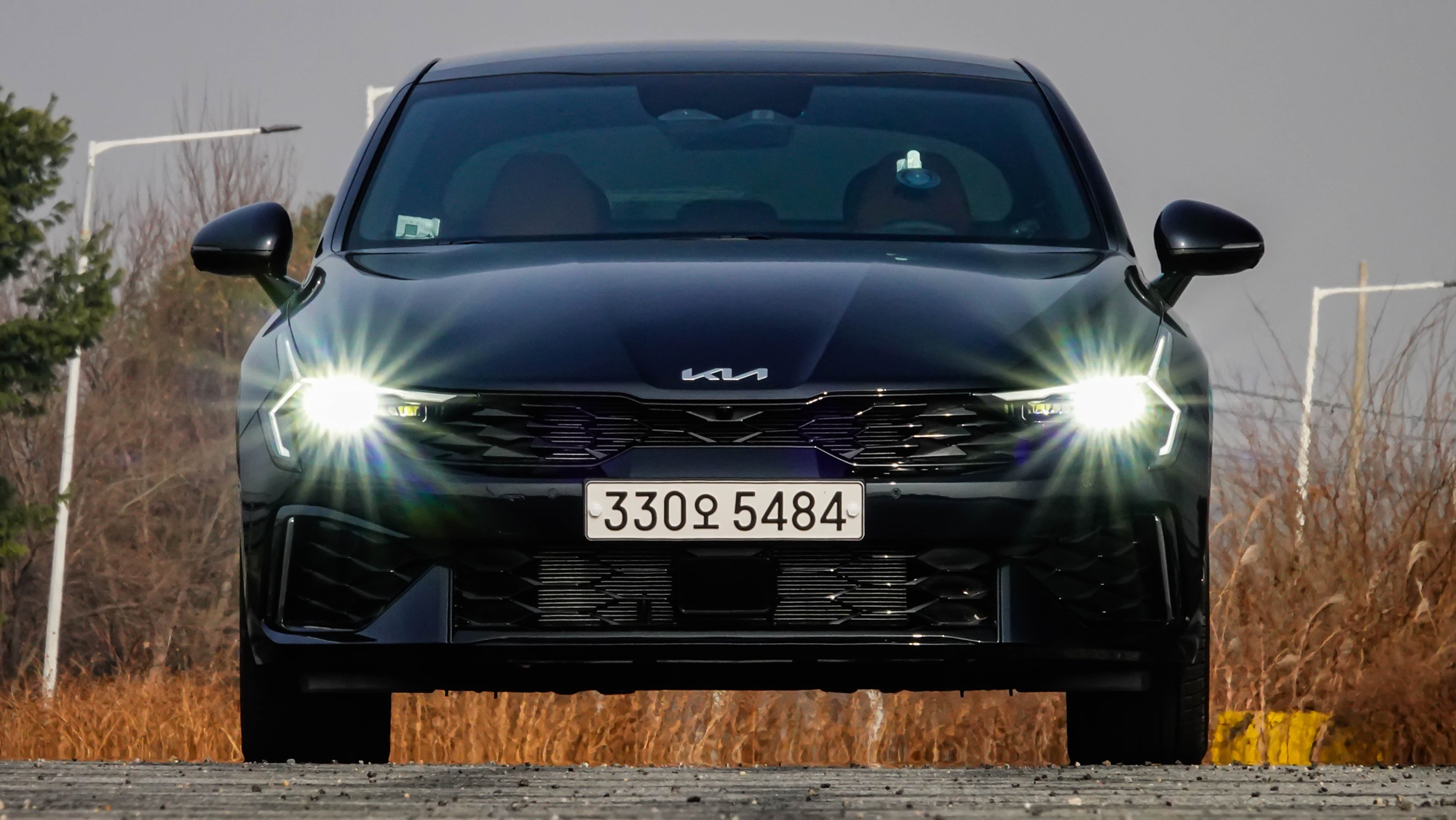
The K5 has front-wheel drive. While stability may waver at higher speeds, in the typical driving range around 100 km/h, there are no real concerns. Being a sedan, the low center of gravity and body height compensate well for the front-wheel drive handicap. It felt stable enough to attempt acceleration while navigating corners at high speeds.
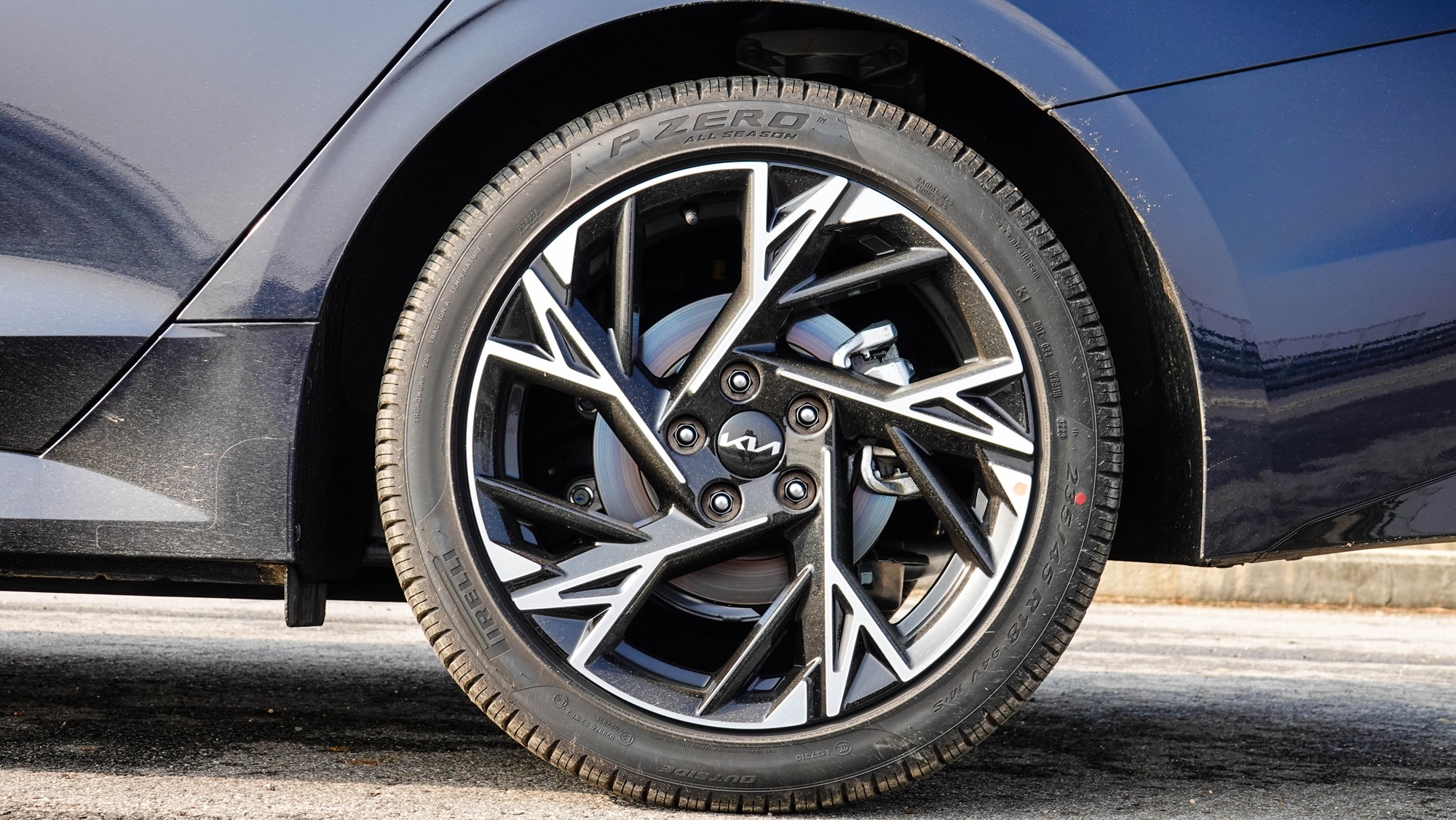
These tires are sized 235/45R18, obtained from Pirelli P ZERO. It’s an interesting choice to equip a midsize sedan with performance-oriented Pirelli tires that are known for high performance. While there’s no downside to using good tires, it might not be the most appropriate match for the car’s performance. Just looking at the tires, it seems like an over-packaging. Wouldn’t consumers prefer lowering the price by offering less performance-oriented tires?
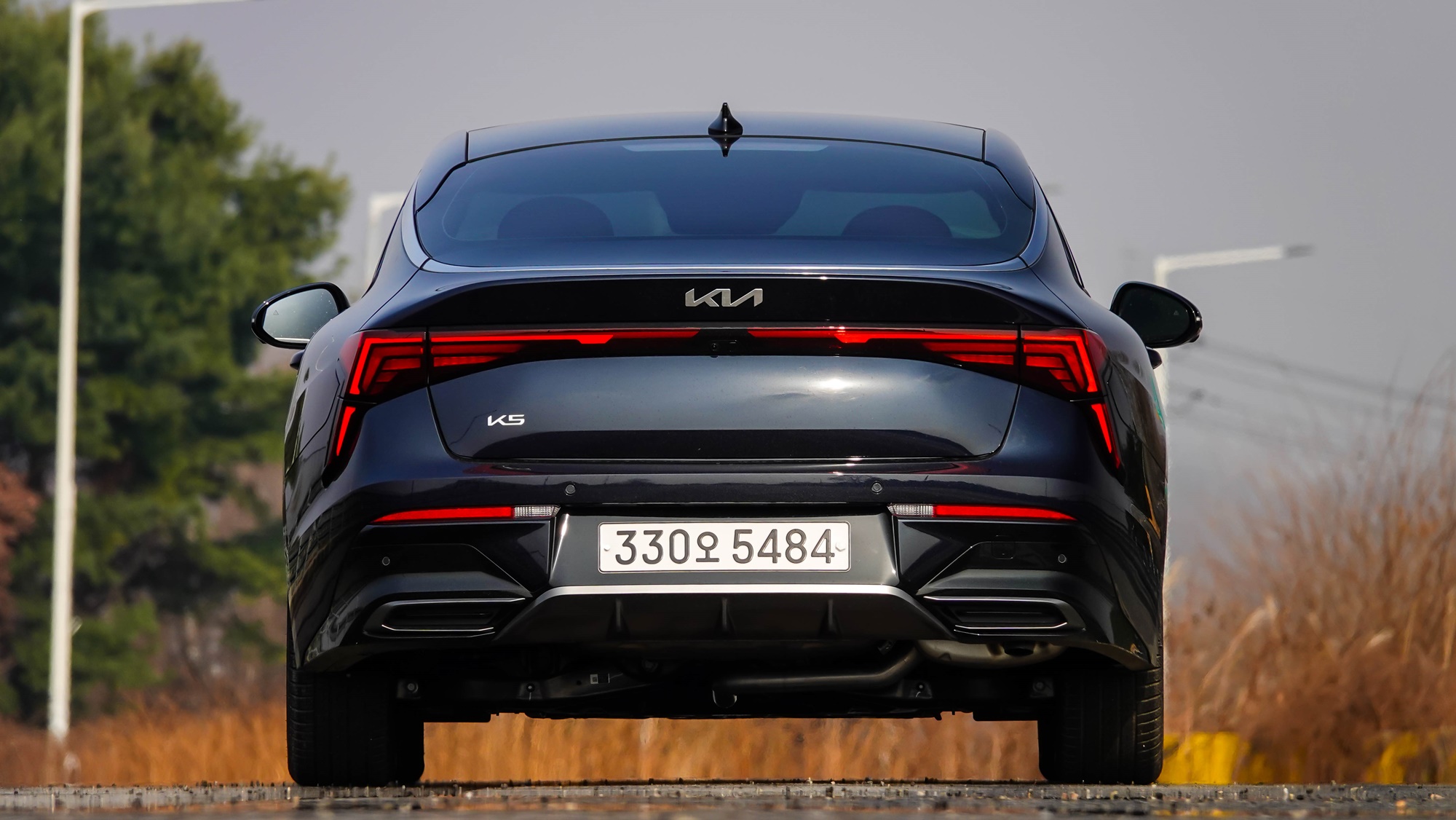
The infotainment system has also taken a leap forward. The panoramic curved display, made by connecting two 12.3-inch monitors, overwhelms the interior. The many functions it houses put pressure on imported cars. The built-in camera replaces the black box, and the digital key allows you to open closed doors and start the engine using just your smartphone.
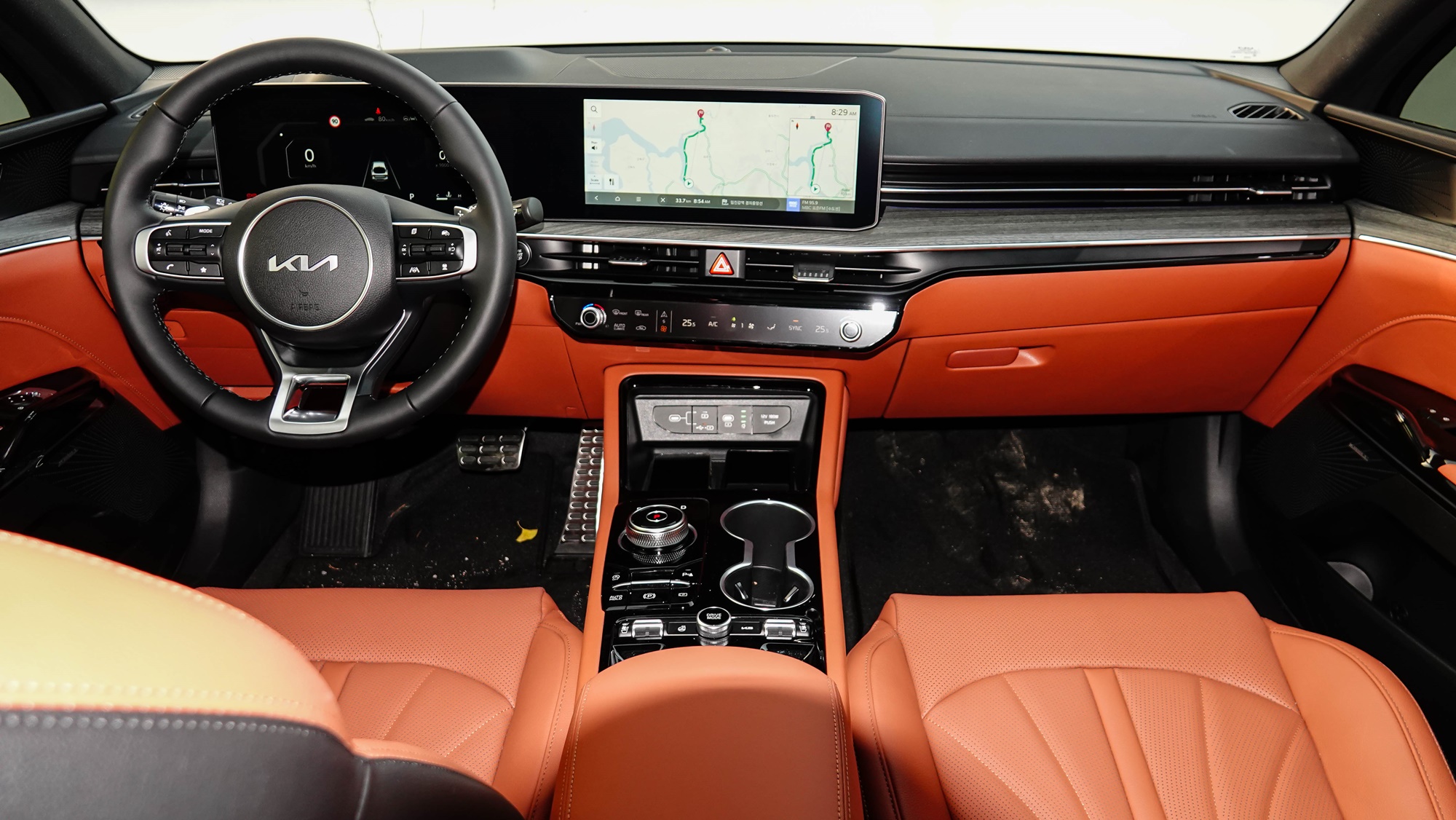
You can use streaming services and update the software over wireless internet. It also allows remote forward and backward movement. You can move the car forward or backward from outside using the remote key.
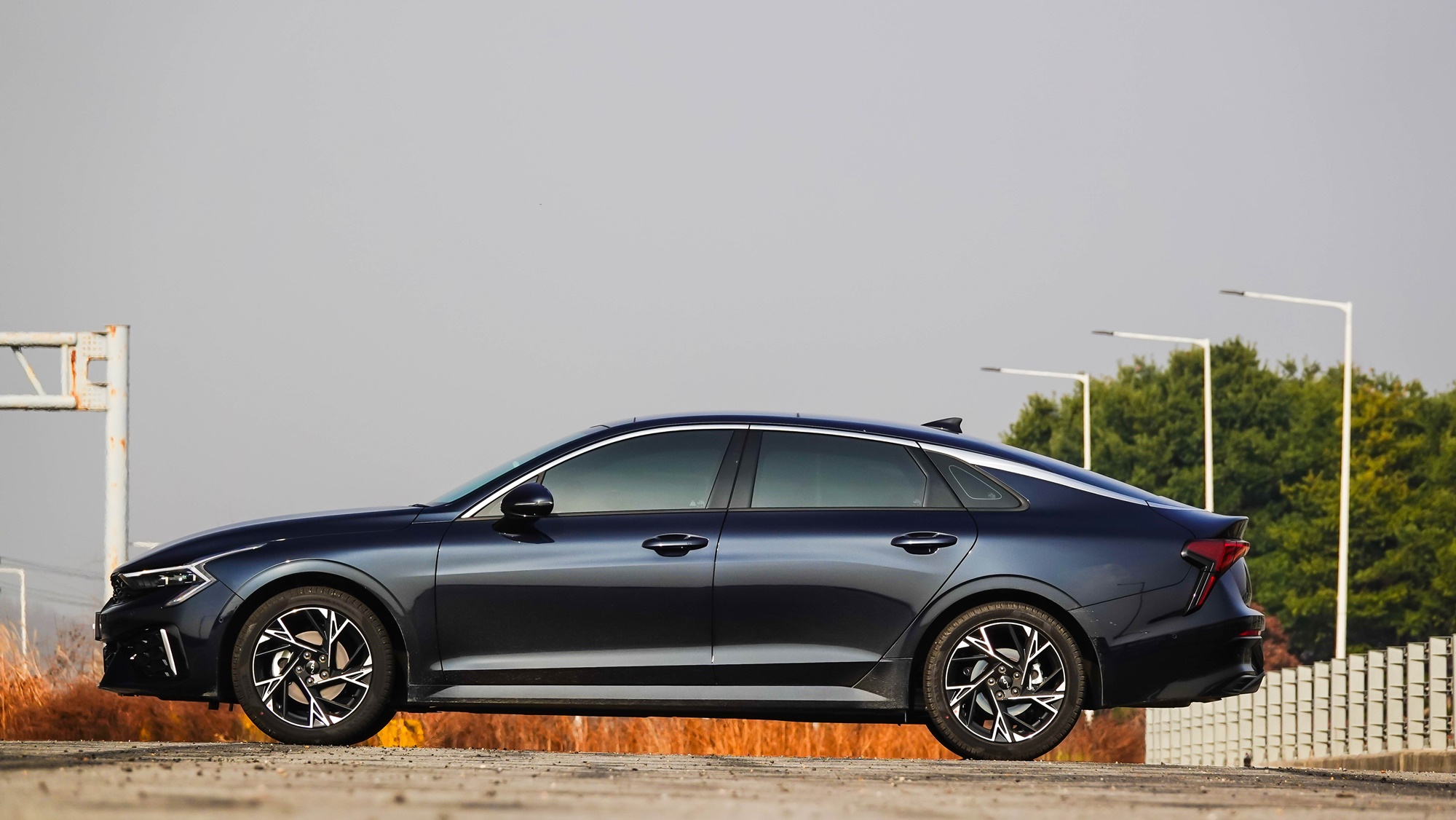
Moreover, there’s a staggering array of capabilities that are hard to list individually. Voice commands are also an impressive feature. Saying “I’m cold” will raise the indoor temperature and activate the heated seats. You can set destinations, make calls, select radio stations, and even open windows, check the weather, and check stocks—all by voice. In comparison to some imported cars that can cost over 100 million won but cannot comprehend Korean, this system shines.
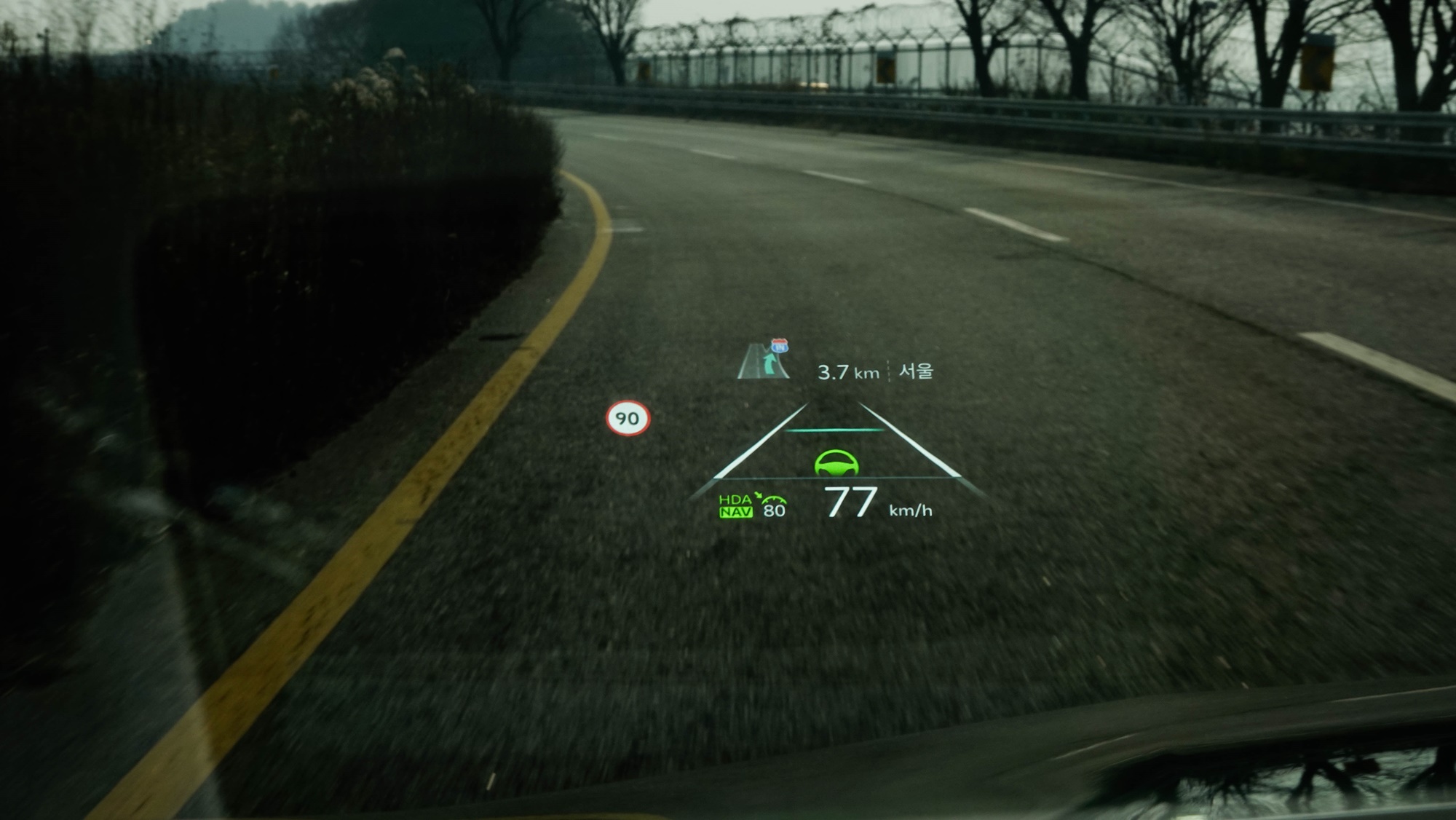
The driving assistance system consistently maintains the vehicle in the center of the lane while keeping a stable distance from the car ahead. It accurately detects and covers the sections that the driver might overlook, ensuring enhanced safety.
Price competitiveness remains astounding. The 2.0 gasoline model starts at 27,840,000 won. The test car, the 2.0 gasoline signature trim, costs 34,470,000 won. With additional options such as the head-up display, built-in camera, comfort package, Krell audio system, and panoramic sunroof, the final delivery price reaches 38,030,000 won. This is an incredible price when compared to imported midsize sedans.
While driving economically between Paju and Seoul over a distance of 55 km, I recorded a fuel efficiency of 15.2 km/L—much better than the official combined fuel efficiency of 12.2 km/L.
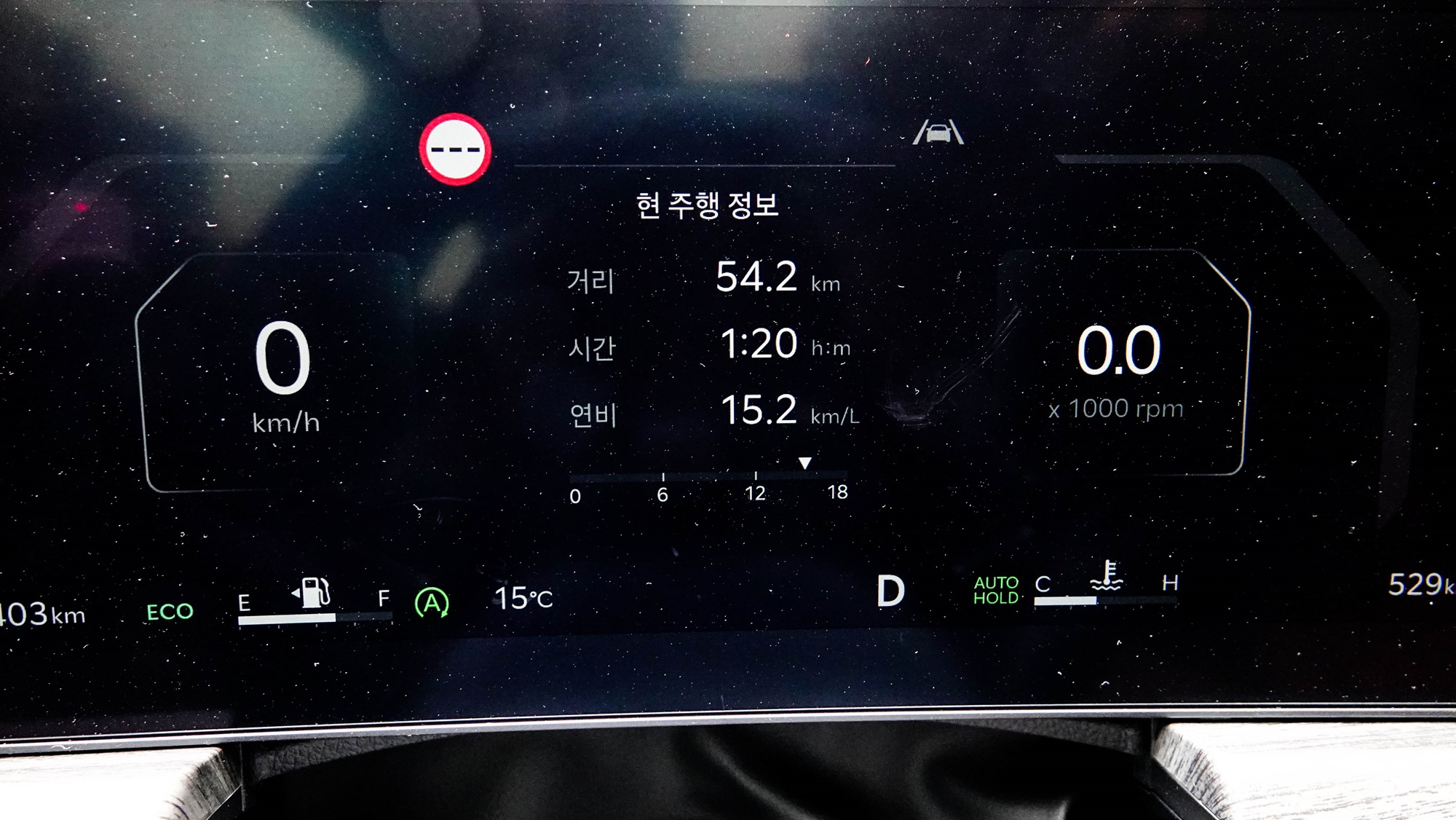
O Jong-hoon’s direct observation
There are some regrets about the assembly quality. The gap at the point where the roof meets the front windshield is wide, and the texture of the roof material is also noticeable to the touch. The trunk roof also reveals bare metal. I wish it could have been finished with more attention to detail.
Although the voice recognition system is excellent, it is unfortunate that it cannot be activated by voice commands. Wouldn’t it be better if you could activate the voice recognition system with commands like “Hello Kia” or “Hi Kia”?
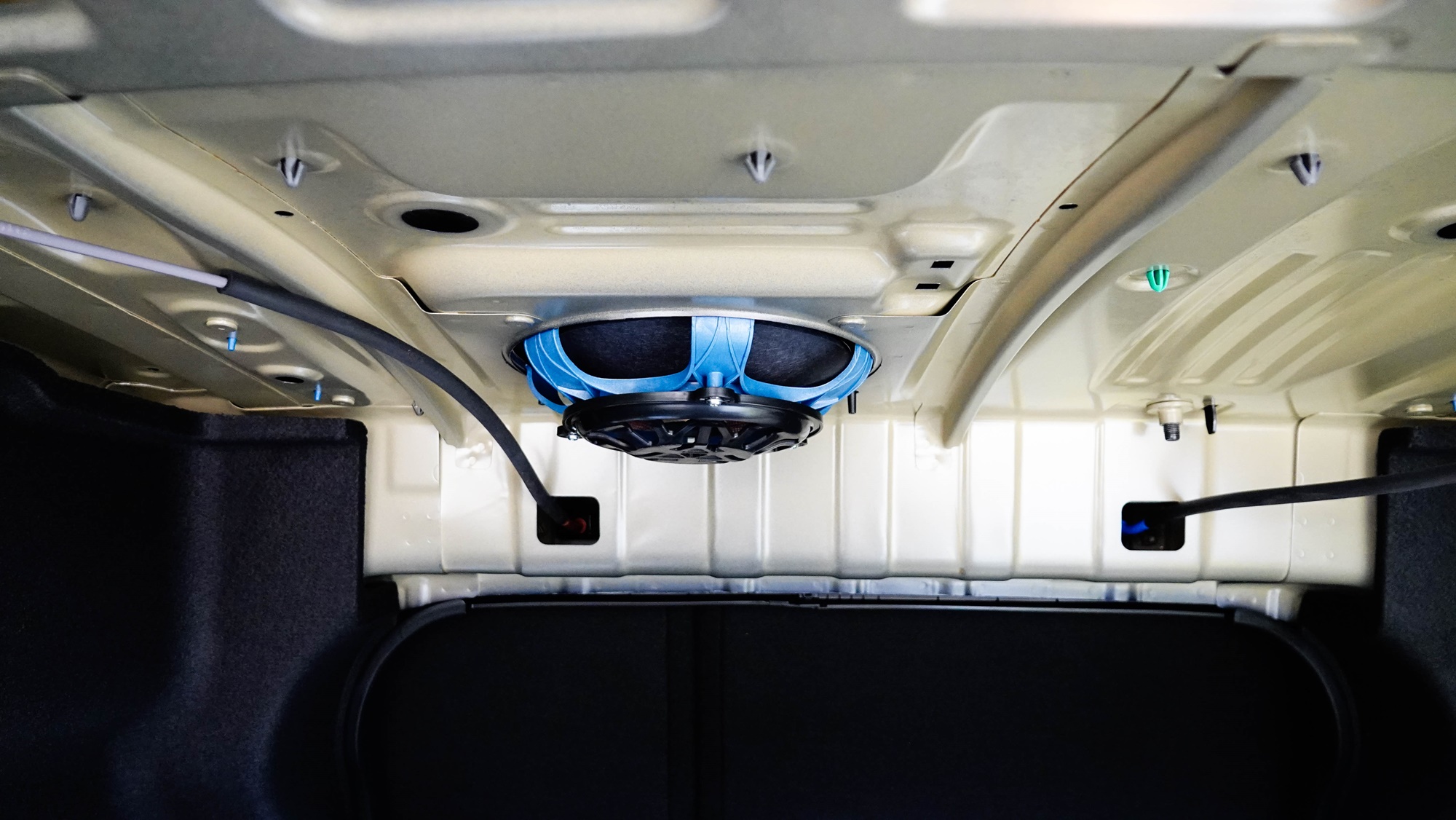
O Jong-hoon yes@autodiary.kr

